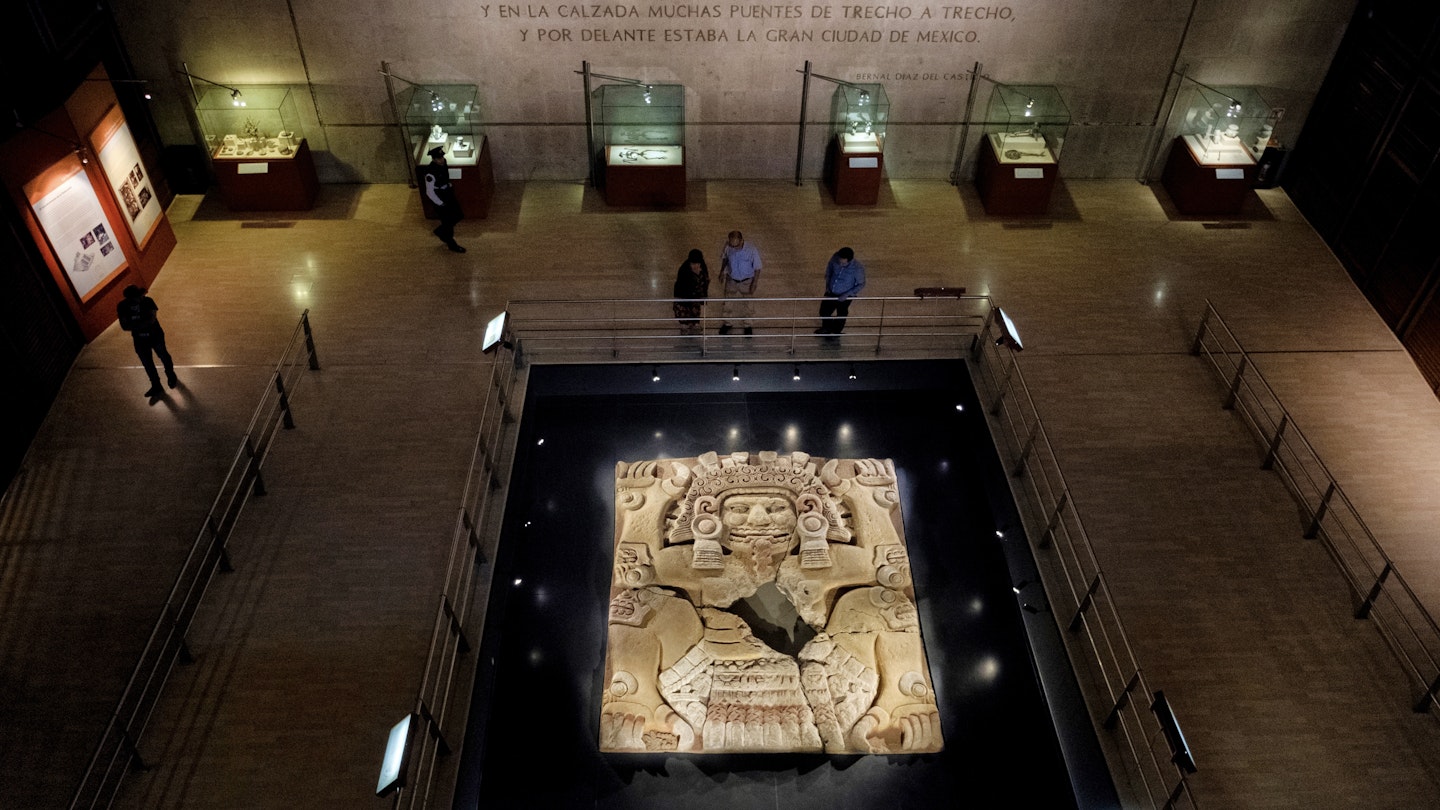Explore Mexico City’s Aztec History with GoTravelDaily
One of the most cosmopolitan cities on Earth, Mexico City is brimming with exciting restaurants, world-class museums, and ultra-modern architecture. As a must-visit destination for savvy travelers, it is no surprise that this extraordinary city has been a capital for centuries—long before the arrival of the Spaniards. By simply scratching the surface of the towering skyscrapers and sprawling neighborhoods, one can discover a rich tapestry of vibrant history. Here’s where to uncover the Aztec past of Mexico City.

1. Discover Traces of “La Gran Tenochtitlan” at Templo Mayor
Tenochtitlan, which once occupied an island in Lake Texcoco, served as the capital of the Aztec Empire. Following the destruction by conquistador Hernán Cortés in 1519, Spanish forces erected colonial monuments atop the remnants of Aztec structures. Consequently, as the city expanded, the intricate system of man-made waterways that characterized Tenochtitlan was drained, leading to the formation of modern Mexico City.
In 1978, archaeologists made a groundbreaking discovery just off the Zócalo in the historic heart of the city—a large pyramid now recognized as Templo Mayor. These ruins, located in the shadow of Mexico City’s magnificent cathedral, alongside a thorough museum, vividly bring to life the city’s Aztec heritage.

2. Consider the Scope of Mexican History at Plaza de las Tres Culturas
The main square in the Tlatelolco neighborhood, Plaza de las Tres Culturas illustrates three significant periods in Mexican history: the Aztec period, the Spanish colonial era, and the post-independence moment. The square features the ruins of the Tlatelolco temple and the remains of what was once the largest market in the region, alongside the Spanish-built Templo de Santiago, constructed using stones from the Aztec temple. This square is also a site of historical importance, having witnessed the tragic events of the 1968 student protests.

3. Climb the Pyramids of Teotihuacán
Teotihuacán is the most renowned Mesoamerican attraction in the greater Mexico City area. Built between the 1st and 7th centuries CE, the origins of this monumental site remain a mystery, although scholars agree that the Aztecs inhabited the city by the 13th century. As you approach this UNESCO-listed site, the enormous Pyramid of the Sun—standing at 210 feet, the third-largest in the world—beckons. Visitors can ascend the steps for breathtaking views, reminiscent of those once enjoyed by the Aztecs over 700 years ago.

4. Experience the Intersection of Old and New at Cuicuilco
Located to the south of Mexico City in Tlalpan, the archaeological site of Cuicuilco, meaning “place of songs” in Nahuatl, is a hidden gem. While the original inhabitants were not Aztecs, the site dates as far back as 1400 BCE. The Aztecs began residing here around the 14th century. The museum within the park provides insights into Aztec culture as well as the many Mesoamerican peoples that preceded them.

5. Explore One of the Best-Preserved Aztec Monuments at Santa Cecilia Acatitlán
Just a 45-minute drive north of the city, the town of Santa Cecilia is home to one of the finest examples of Aztec architecture still standing. Although most stones were repurposed for churches following the Spanish arrival, significant remains still exist, making it an excellent destination for those interested in Aztec history. Excavations have revealed that this site served as a political and religious center during the Aztec empire’s peak.

6. Gain Context at the Museum of Anthropology
The Museum of Anthropology is Mexico’s largest and most frequented museum, showcasing the impressive range of cultures and artworks. This world-class collection not only opens your eyes and mind to the history of Mexico but serves as a perfect capstone to your exploration of Aztec history in Mexico City. It enriches your understanding of the physical sites you encounter throughout the city.
With its deep-rooted history and vibrant culture, Mexico City remains an essential destination for anyone looking to dive into the fascinating world of the Aztecs. Through various archaeological sites and museums, visitors can genuinely appreciate the legacy of this remarkable civilization.





